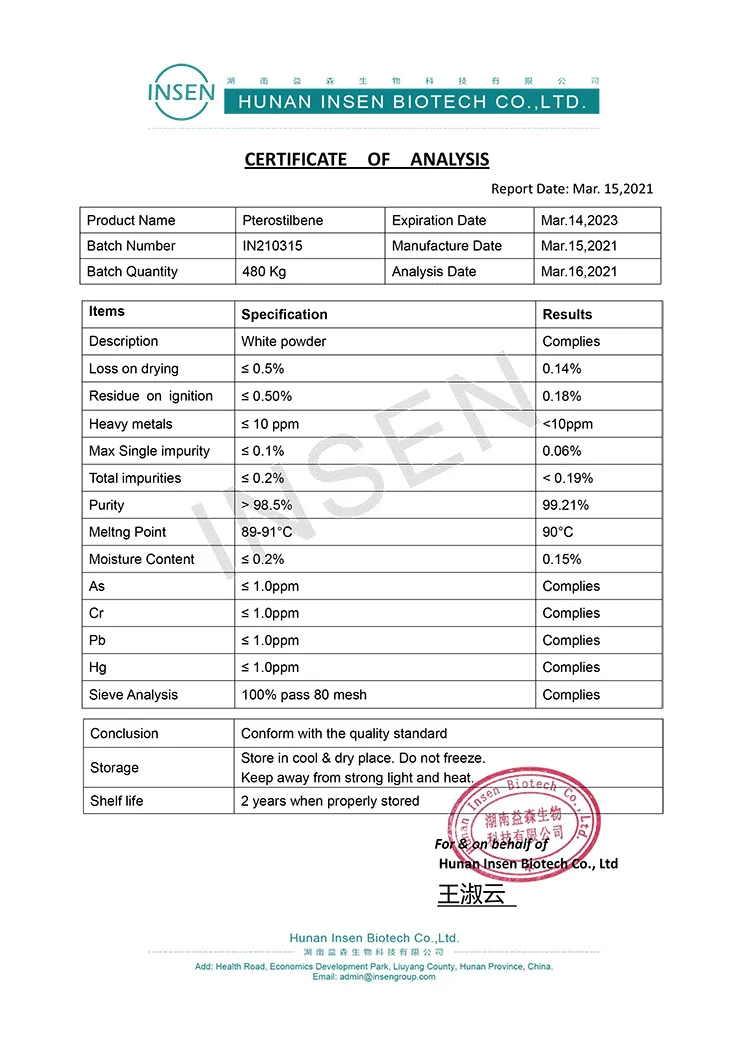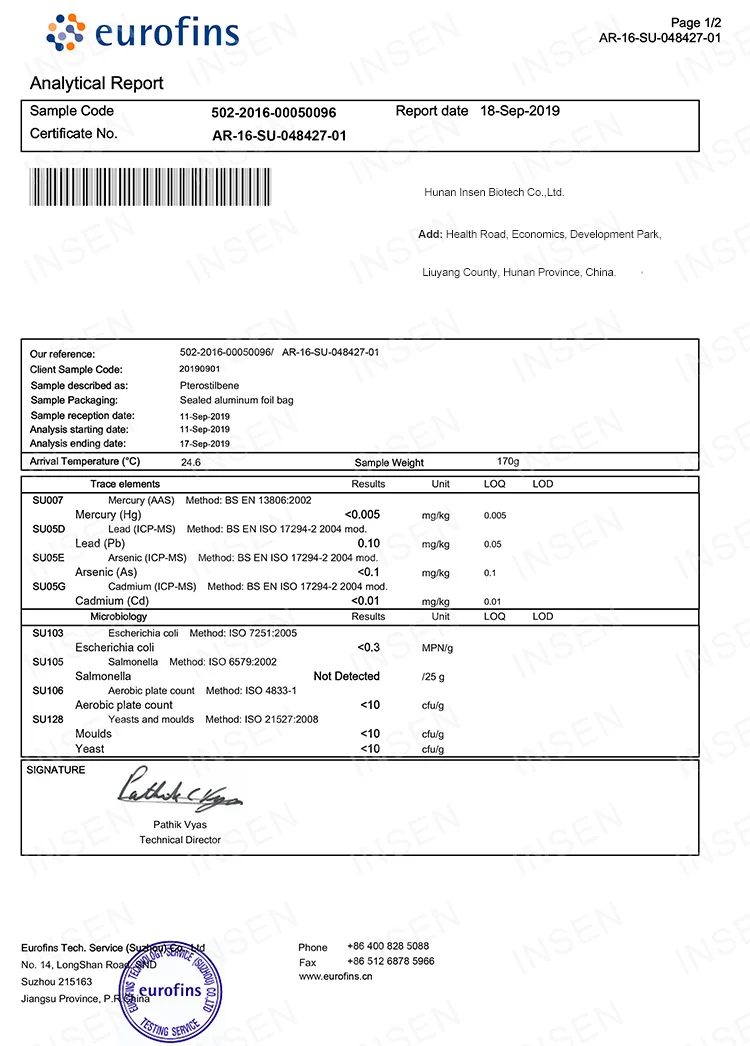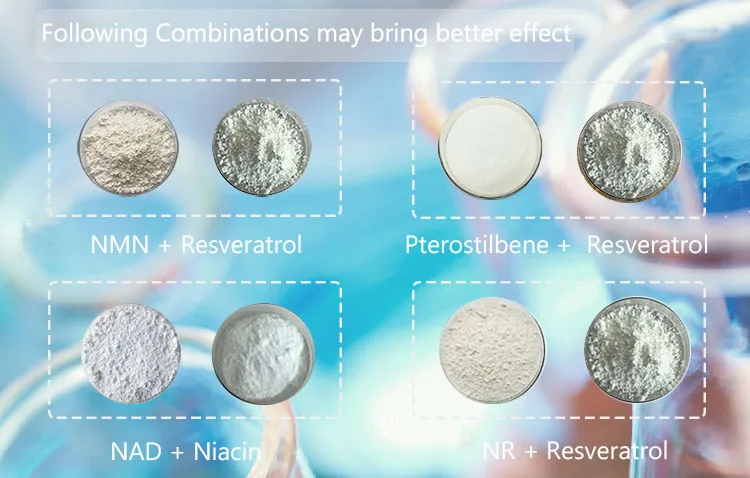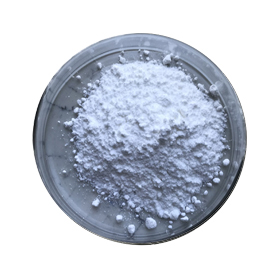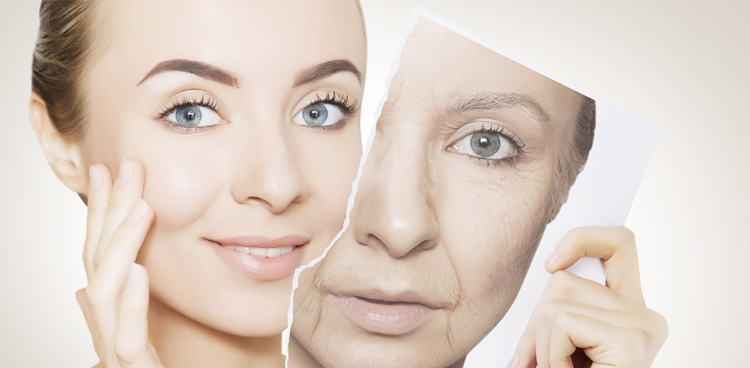

Pterostilbene is a polyhydroxy stilbene compound, widely found in many natural plants such as grapes, blueberries, sword leaf dracaena, but because it was first discovered in red sandalwood, it was named as Pterostilbene.
Insen Pterostilbene is produced by synthetic method. Yield for natural pterostilbene is very low and price is extremely high, so most Pterostilbene in the market is synthetic.

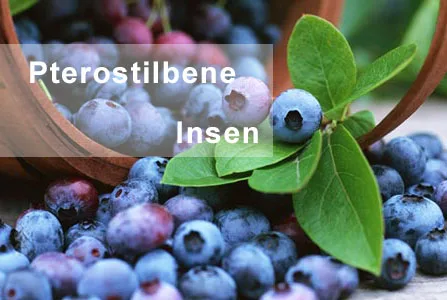
|
1. Pterostilbene is more lipophilic and has more potential for cell uptake.
2. It has more biological adaptability than resveratrol, greatly improves the oral absorption, and has better metabolic stability.
3. Compared with resveratrol, the half-life in the body is longer:
Resveratrol: Approximately 14 minutes in the blood.
Pterostilbene: About 105 minutes in the blood.
|

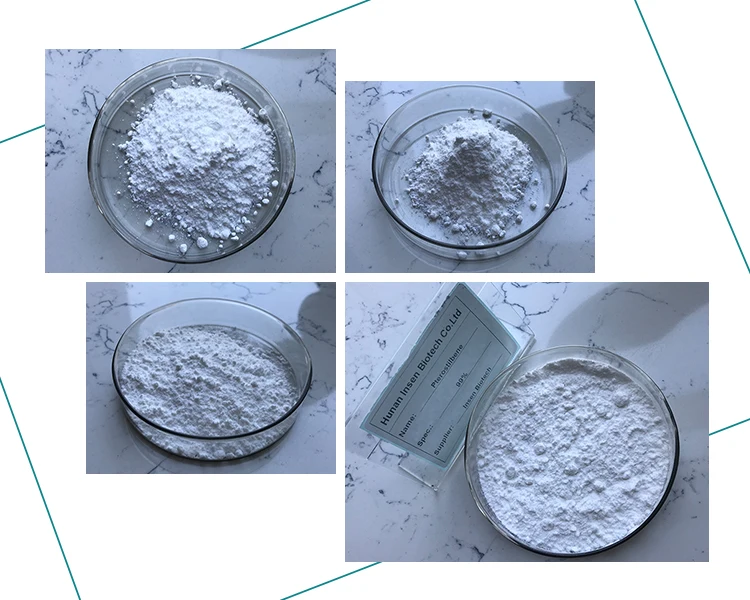

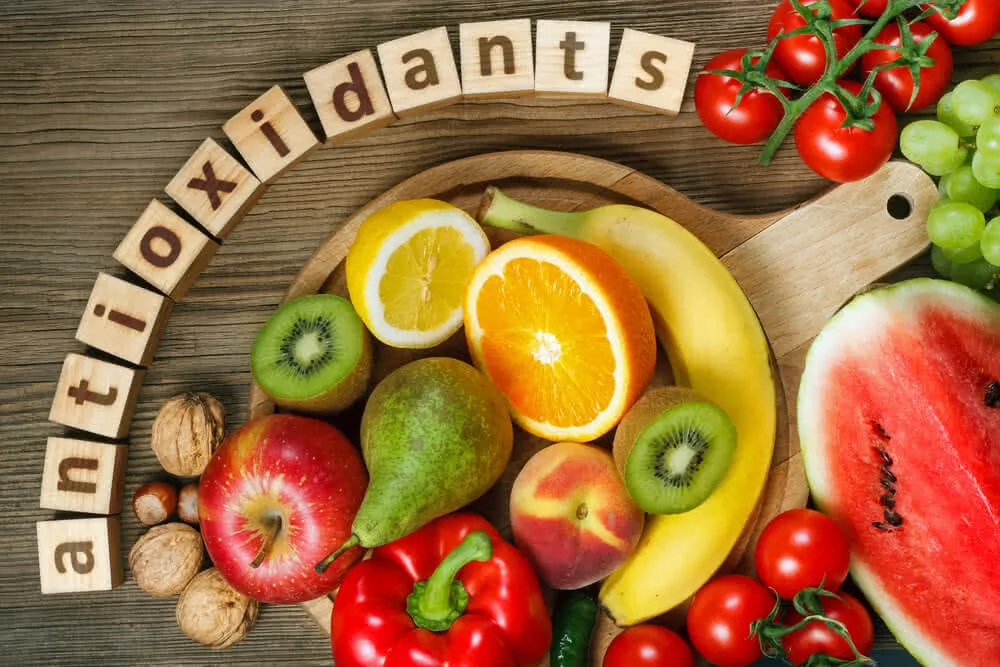
|
Antioxidants
Pterostilbene has significant antioxidant and free radical scavenging abilities similar to resveratrol. Studies in vivo and in vitro have confirmed that it has a strong role in scavenging oxygen free radicals and protecting cells. As an antioxidant, Pterocarpus stilbene can inhibit the generation of oxygen free radicals, scavenge and capture free radicals, protect DNA, protein and other macromolecules from active oxygen damage, and inhibit tumor growth.
|
|
Anti-inflammatory effects
Pterostilbene has a moderate inhibitory effect on cyclooxygenase COX-1, but has only a weak inhibitory activity on COX-2, so it has obvious anti-inflammatory effects, and its antifungal activity is more than 5 times that of resveratrol.
Anti-cell proliferation
Improve cognitive function
|

|

